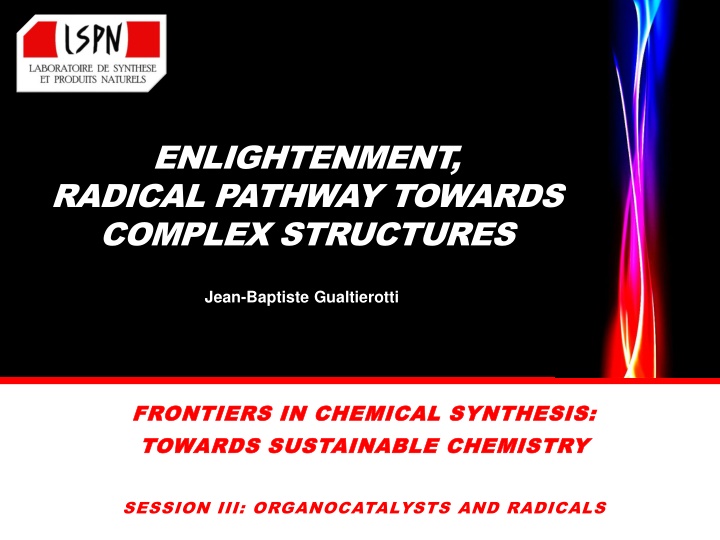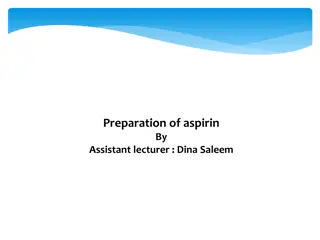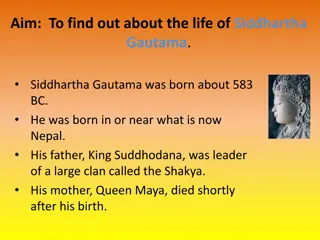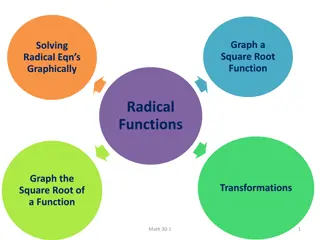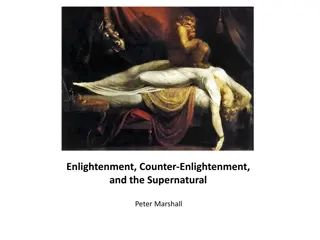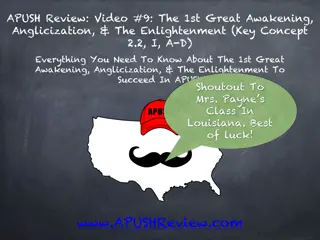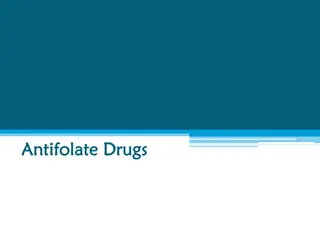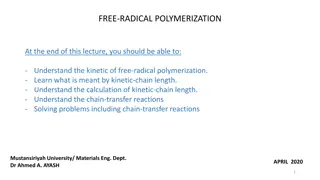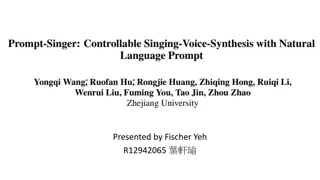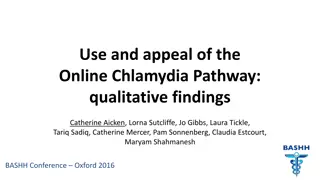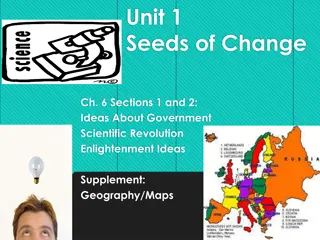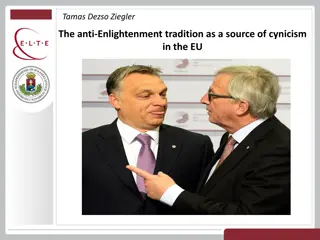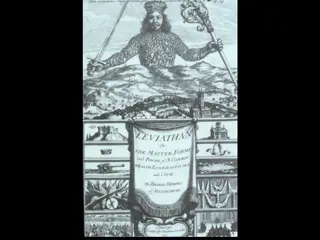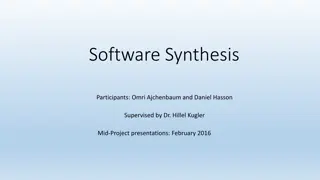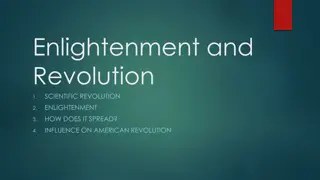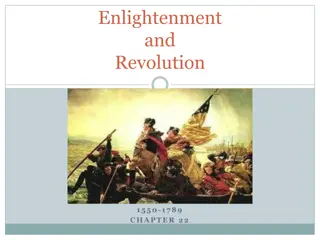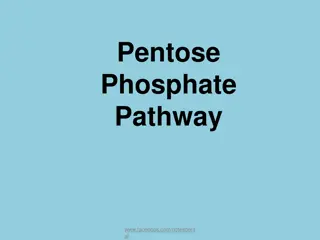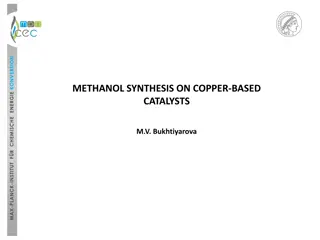Enlightenment and Radical Pathway Towards Complex Structures in Chemical Synthesis
Frontiers in chemical synthesis explore methods for forming complex structures through total synthesis, including photo-cycloadditions, photo-rearrangements, and more. Primary radicals play a crucial role in the evolution of synthetic chemistry, with notable contributions dating back to the early 1900s. The use of light-based chemistry offers advantages over ionic reactions, leading to potential cascade reactions and improved atom economy. Photochemical reactions enable accessing congested areas and can reverse symmetry relationships. The Jablonski diagram simplifies photo-excitation pathways, highlighting quantum yield and sensitization mechanisms.
Download Presentation

Please find below an Image/Link to download the presentation.
The content on the website is provided AS IS for your information and personal use only. It may not be sold, licensed, or shared on other websites without obtaining consent from the author.If you encounter any issues during the download, it is possible that the publisher has removed the file from their server.
You are allowed to download the files provided on this website for personal or commercial use, subject to the condition that they are used lawfully. All files are the property of their respective owners.
The content on the website is provided AS IS for your information and personal use only. It may not be sold, licensed, or shared on other websites without obtaining consent from the author.
E N D
Presentation Transcript
ENLIGHTENMENT, RADICAL PATHWAY TOWARDS COMPLEX STRUCTURES Jean-Baptiste Gualtierotti FRONTIERS IN CHEMICAL SYNTHESIS: FRONTIERS IN CHEMICAL SYNTHESIS: TOWARDS TOWARDS SUSTAINABLE SUSTAINABLE CHEMISTRY CHEMISTRY SESSION III: ORGANOCATALYSTS AND RADICALS
LAYOUT - Historical Background - Methods for the formation of complex structures through total synthesis Photo-cycloadditions Photo-rearrangements Norrish 1 and 2 Photo-extrusion Photo-oxidation Photo-protecting groups - Summary and questions 2
PRIMARY RADICALS Gomberg (U. of Michigan 1900): first who recognized he had stumbled the evidence of a free radical 1911 enough evidence for the community to accept their existence Giacomo Ciamician, by some called the father of photochemistry, proposed the concept of solar energy as green source to replace societies dependency on coal (1912) 1929: Paneth and Hofeditz produced the methyl free radical, CH3 In 1933, Morris Kharasch and his student, Frank Mayo, invoked a free-radical mechanism and discovered "the peroxide effect Evolved towards plastic, understanding of many processes (ie oxidative stress) and so on 1970 s and onwards: truly used in synthesis i.e Barton reaction in steroid synthesis On the arid lands there will spring up industrial colonies without smoke and without smokestacks; forests of glass tubes will extend over the plains and glass buildings will rise everywhere; inside of these will take place the photochemical processes that hitherto have been the guarded secret of the plants, but that will have been mastered by human industry which will know how to make them bear even more abundant fruit than nature, for nature is not in a hurry and mankind is. Giacomo Ciamician science 36, 385, 1912 3
A SINGULAR ENTITY In addition light based chemistry Advantageous over ionic counterparts ?? ??????? ?? ????????? Atom economy = More FG tolerant Mw light << Standard reagents Lesser pH dependence E factor = ? ??????? ????? Potential cascade reactions ? ??????? Light waste? Can acess congested areas Photochemical reactions lead to a reversal of terminal symmetry relation-ships and reversal of stereospecificity Woodward-Hoffmann rules Photo [1.3] superafacial sigmatropic shift Thermal [1.3] antarafacial sigmatropic shift 4
PHOTO-EXCITATION PATHWAYS Simplified Jablonski diagram: Quantum yield: ???? ?????? = ???? ?? ? ????? ???????? Sensitization by energy transfer Dexter or FRET mechanism 5
EXIPLEX Complex formed by the stabilizing interactions between ground state molecule and exited state molecule M + M*: eximer M + N*: exiplex 6
TOWARDS COMPLEX STRUCTURES THROUGH RADICALS Questions How to control the formation of an intermediate singlet or triplet state? What reaction media are available for the following reactions? 7
2+2 CYCLOADDITIONS Most common photochemical reaction, based on excitation to the reactive long lived * triplet (biradical) state Photosensitivisation oft needed for ISC Buu Hue, B. T.; Dijkink, J.; Kuiper, S.; van Schaik, S.; van Maarseveen, J. H.; Hiemstra, H Eur. J. Org. Chem.2006, 127-137. Crimmins, Michael T.; Pace, Jennifer M.; Nantermet, Philippe G.; Kim-Meade, Agnes S.; Thomas, James B.; Watterson, Scott H.; Wagman, Allan S.. J. Am. Chem. Soc.2000, 122, 8453-8463 8
2+2 CYCLOADDITIONS Additives to enhance diaselectivity Tsutsumi, K.; Nakano, H.; Furutani, A.; Endou, K.; Merpuge, A.; Shintani, T.; Morimoto, T.; Kakiuchi, K., J. Org .Chem 2004, 69 (3), 785-789. 9
2+2 CYCLOADDITIONS De Mayo varient Enol followed by retro-aldol David E. Minter and, Christopher D. Winslow J.Org.Chem 2004 69 (5), 1603-1606 10
2+2 CYCLOADDITIONS Patern -B chi varient Hetero 2+2 cycloadditon, passing through triplet n * or * carbonyl biradical Nehrings, A.; Scharf, H.-D.; Runsink, J., Angew Chem 1985, 97 (10), 882-883. Boxall, Richard J.; Ferris, Leigh; Grainger, Richard S. Synlett 2004 2379-2381 11
2+2 CYCLOADDITIONS Patern -B chi varient Efforts to reach stero-control have been made Guo, H.; Herdtweck, E.; Bach, T., Angew. Chem. Int. Ed. 2010, 49 (42), 7782-7785. 12
4+2 CYCLOADDITIONS Rarer: photoexcitation dealigns orbitals Some examples exist: based on photoswitching rather than photoactivation Davies, H. M. L.; Loe, .; Stafford, D. G., Org Let 2005, 7 (25), 5561-5563. 13
PHOTOCYCLOADDITIONS Additions on aromatic cores leading to the loss of aromaticity ortho para meta Intra/inter selectivity: Regioselective issues: Controllable by tethering and substituant optimisation Steroselective issues: endo prefered Facial selectivity: Structure dependent 14
PHOTOCYCLOADDITIONS Meta-photocycloaddition Endo selectivity -cedrene 1 Howbert J.J. Wender P.A., J. Am. Chem. Soc, 1981 103, 688-690 Deicated review: Chappell, D.; Russell, A. T., Organic & Biomolecular Chemistry 2006, 4 (24), 4409-4430. 15
5+2 PHOTOCYCLOADDITIONS Unusual intramolecular reaction, protecting group free Lainchbury, M. D.; Medley, M. I.; Taylor, P. M.; Hirst, P.; Dohle, W.; Booker-Milburn, K. I., J. Org. Chem. 2008, 73 (17), 6497-6505. 16
6+2 PHOTOCYCLOADDITIONS 6 + 2 also exists, although rare in synthesis Feldman, K. S.; Wu, M. J.; Rotella, D. P., J.Am.Chem.Soc 1990, 112 (23), 8490-8496. 17
PHOTO-REARANGEMENTS X = CH2 Di- -methane rearangement X = O Oxa-Di- -methane rearangement Singh, V.; Sahu, P. K.; Mobin, S. M., Tetrahedron 2004,60 (44), 9925-9930 18
PHOTO-REARANGEMENTS Barton Nitrite ester reaction 5 hydrogen abstraction Hakimelahi G.H., Li P., Moosavi-Movahedi A., ChamaniJ., Khodarahmi G. A., Ly T. W., Valiyev F., Leong M. K., Hakimelahi S., Shia K. Chao I. Org. Biomol. Chem., 2003, 1, 2461-2467 Similar to the Hofmann-L ffler-Freytag Reaction, amine instead of alcohol 19
PHOTO-FRIES REARANGEMENT Strong lewis acid Mild alternative Through homolitical cleavage of the ester bond Regioselectivity dependant on substituded positions standard reaction did not work Okada K., Suzuki R., Yokota T. Biosci. Biotechnol, Biochem. 1999, 63, 257-260 Standard Fries in general requires unencumbered arenes Magauer, T.; Martin, H. J.; Mulzer, J., Angew Chem. Int. Ed. 2009, 48 (33), 6032-6036. 20
NORRISH-YANG REACTION Norrish 2 Yang Kraus, G. A.; Chen, L., J. Am. Chem. Soc 1990, 112 (9), 3464-3466. Wessig, P; Teubner, J Synlett2006, 1543-1546 21
NORRISH CLEAVAGE C.-H Lin, Y.-L. Su, H.-M. Tai, Heterocycles 2006, 68, 771-777 Molander, G. A.; St. Jean, D. J.; Haas, J., J. Am. Chem. Soc 2004, 126 (6), 1642-1643. 22
PHOTOEXTRUSION Cyclic ketone double alpha cleavage Veerman, M.; Resendiz, M. J. E.; Garcia-Garibay, M. A., Org Lett 2006, 8 (12), 2615-2617. Tetrazo-option also known 23
PHOTOOXYDATION Singlet oxygen is far more reactive than ground state triplet oxygen Easy oxidation, sunlight is sufficient. Vassilikogiannakis, G.; Margaros, I.; Montagnon, T.; Stratakis, M., Chem. Eur. J. 2005,11 (20), 5899-5907. Photo-oxydation of furans gave several natural products Mace, L. H.; Shanmugham, M. S.; White, J. D.; Drew, M. G. B., Org. Biomol. Chem. 2006, 4 (6), 1020-1031. Miyaoka, H.; Yamanishi, M.; Kajiwara, Y.; Yamada, Y., J Org Chem 2003,68 (9), 3476-3479. 24
PROTECTING GROUPS Cleavage by light avoids reagents and is rapid and clean via Snider, B. B.; Busuyek, M. V., Tetrahedron 2001,57 (16), 3301-3307. 25
PHOTOCHEMICAL MCR Light as an auxillary for radical chemistry Ryu, I.; Kreimerman, S.; Araki, F.; Nishitani, S.; Oderaotoshi, Y.; Minakata, S.; Komatsu, M., J. Am. Chem. Soc 2002,124 (15), 3812-3813. Recent similar work by Corey R. J. Stephenson on light photoredox catalysis 26
SUMMARY Many structures are accessible through photo-induced radical reactions Oft in greener conditions, even at times in crystal phase Sensitizers, additives and carefully chosen substituents can induce selectivity on several levels Questions? 27
